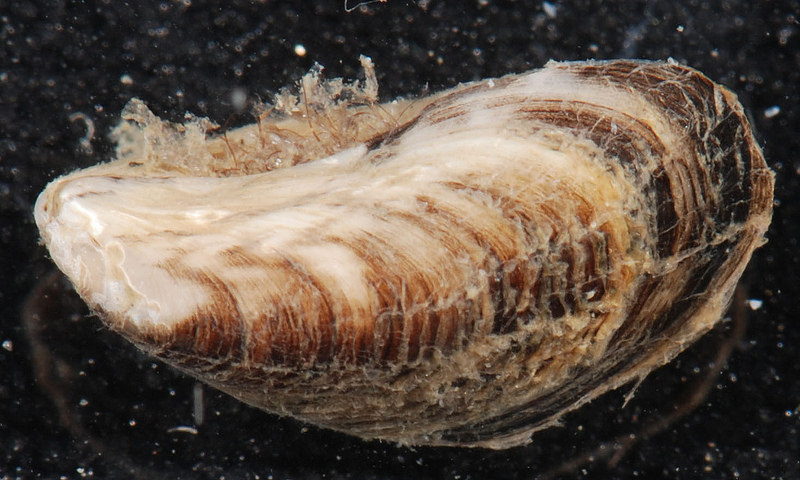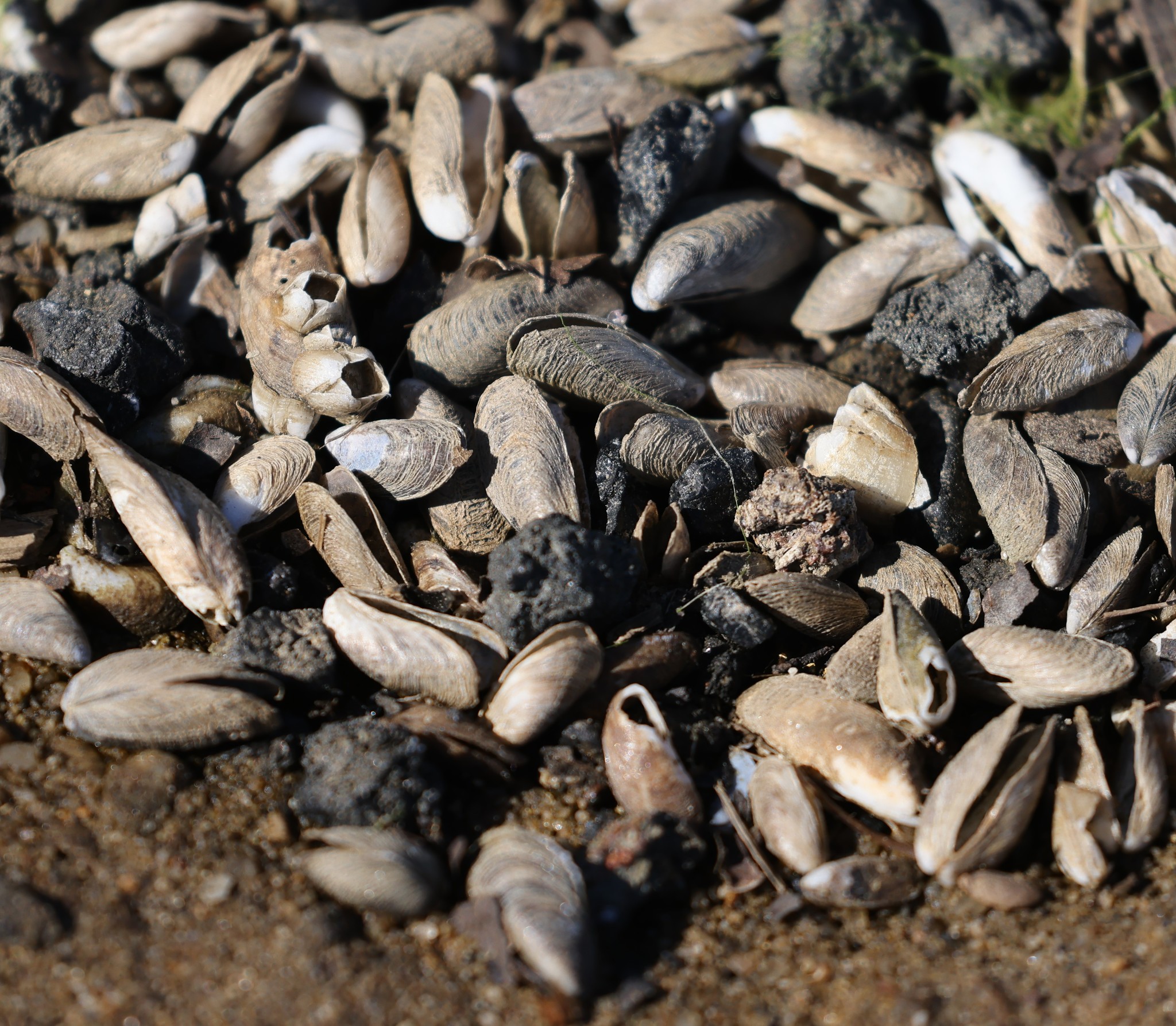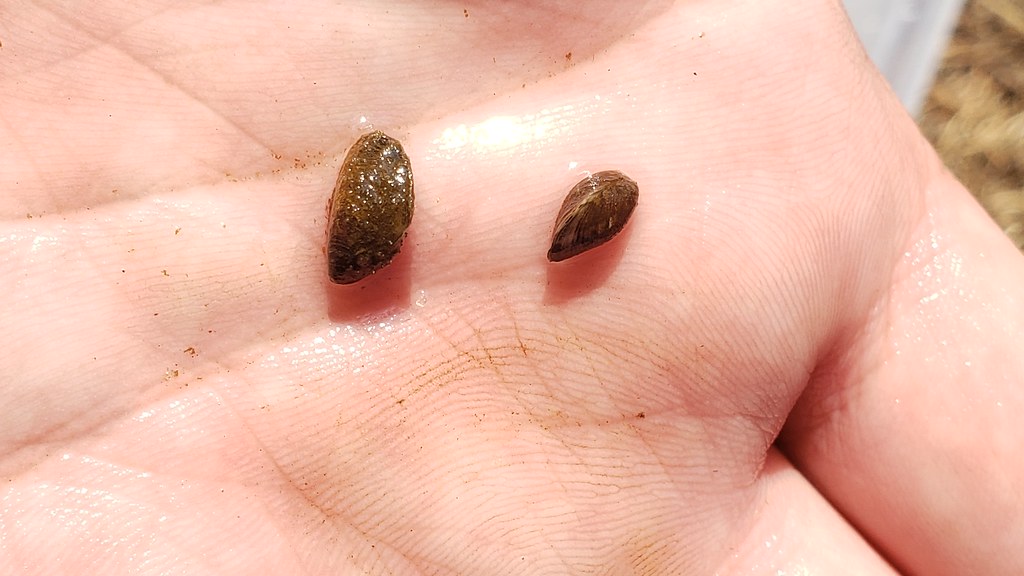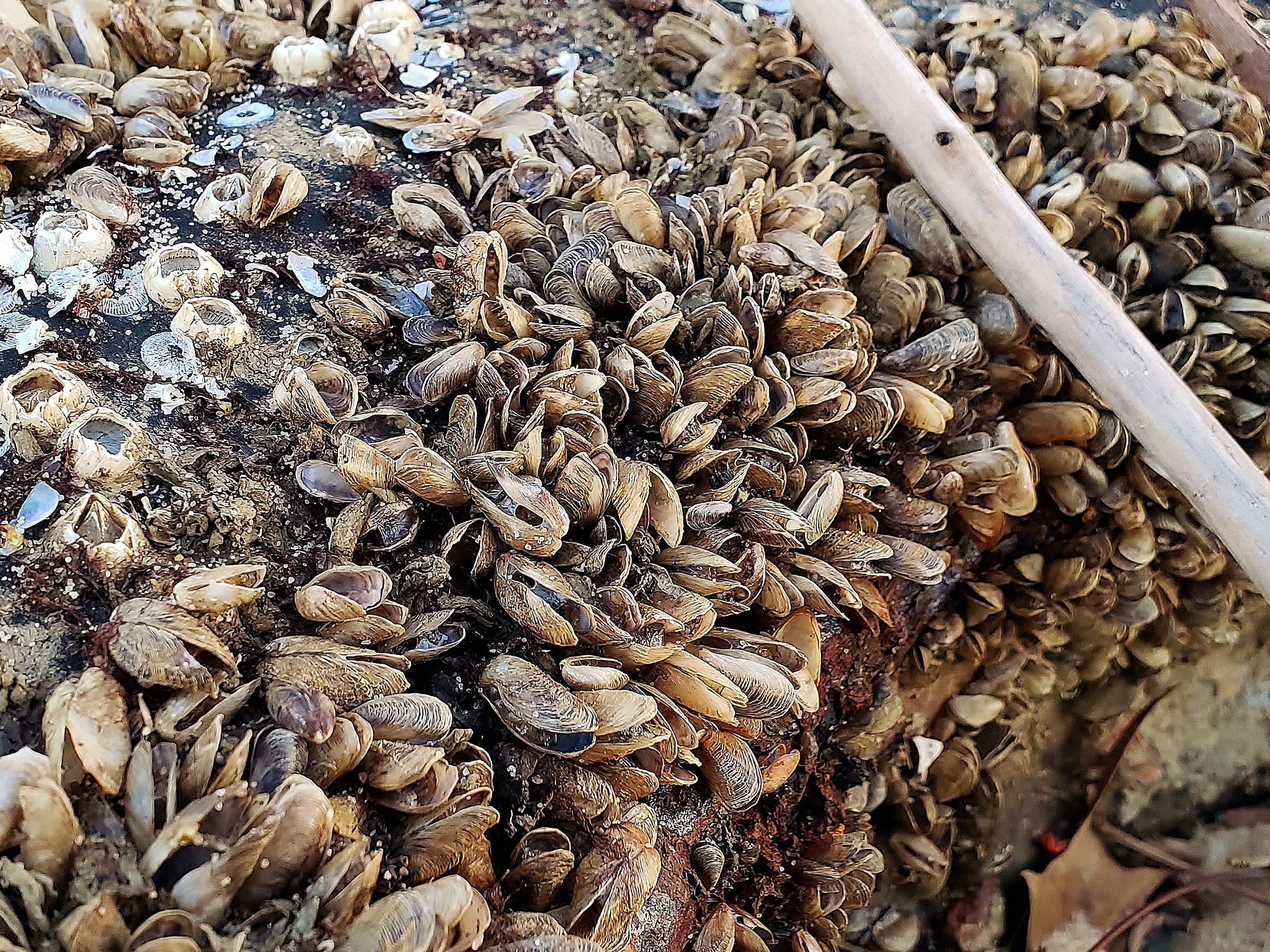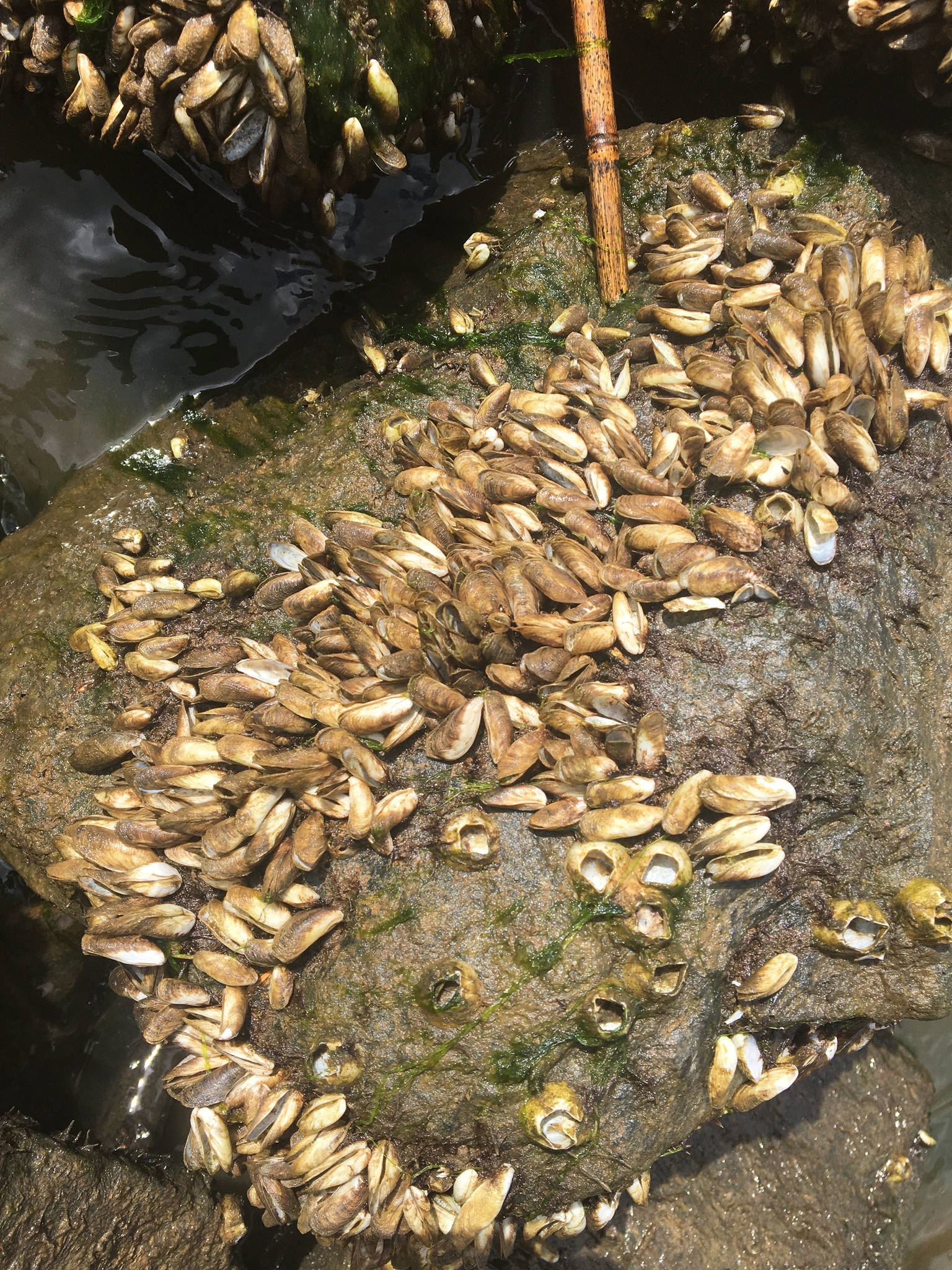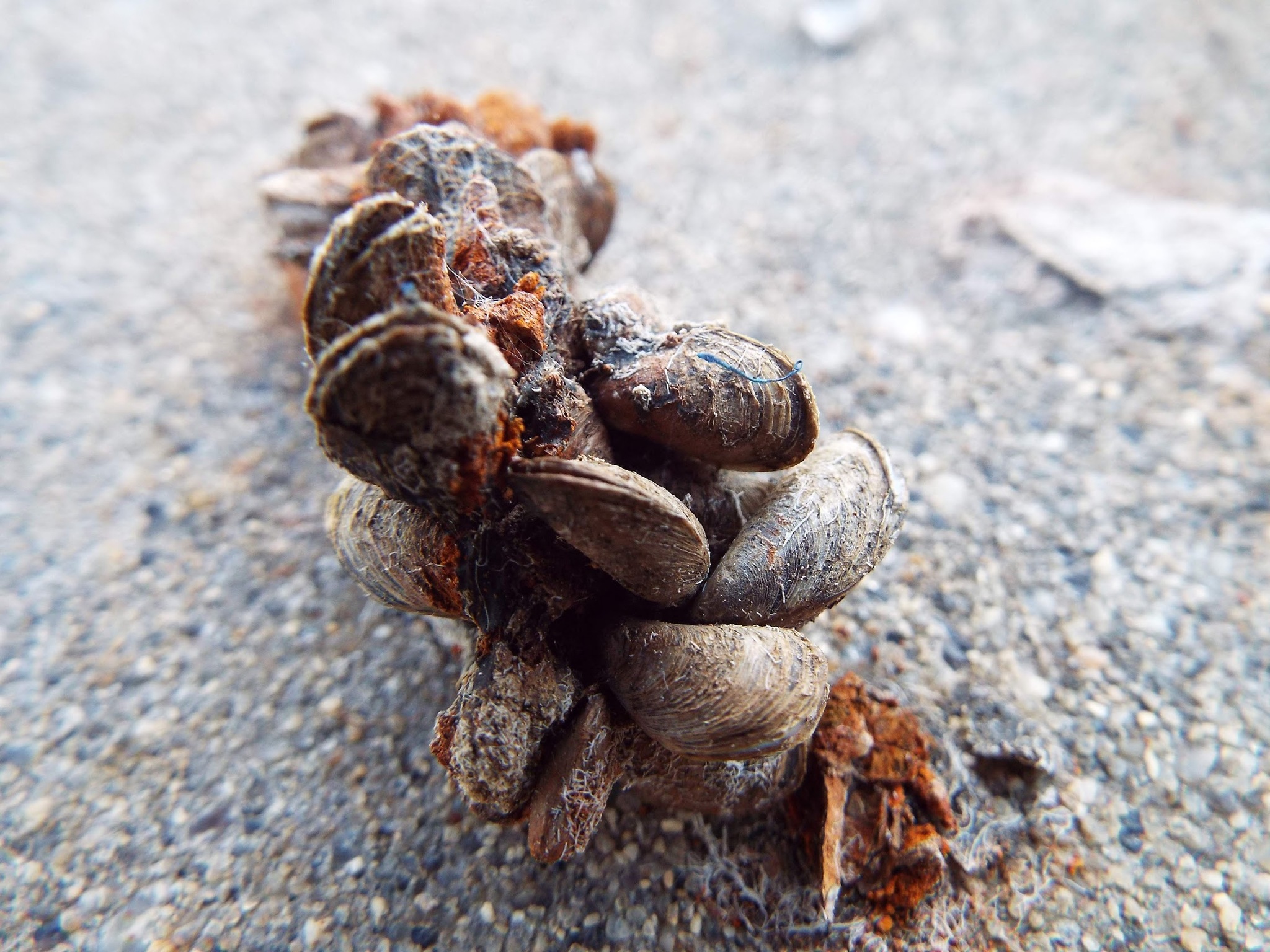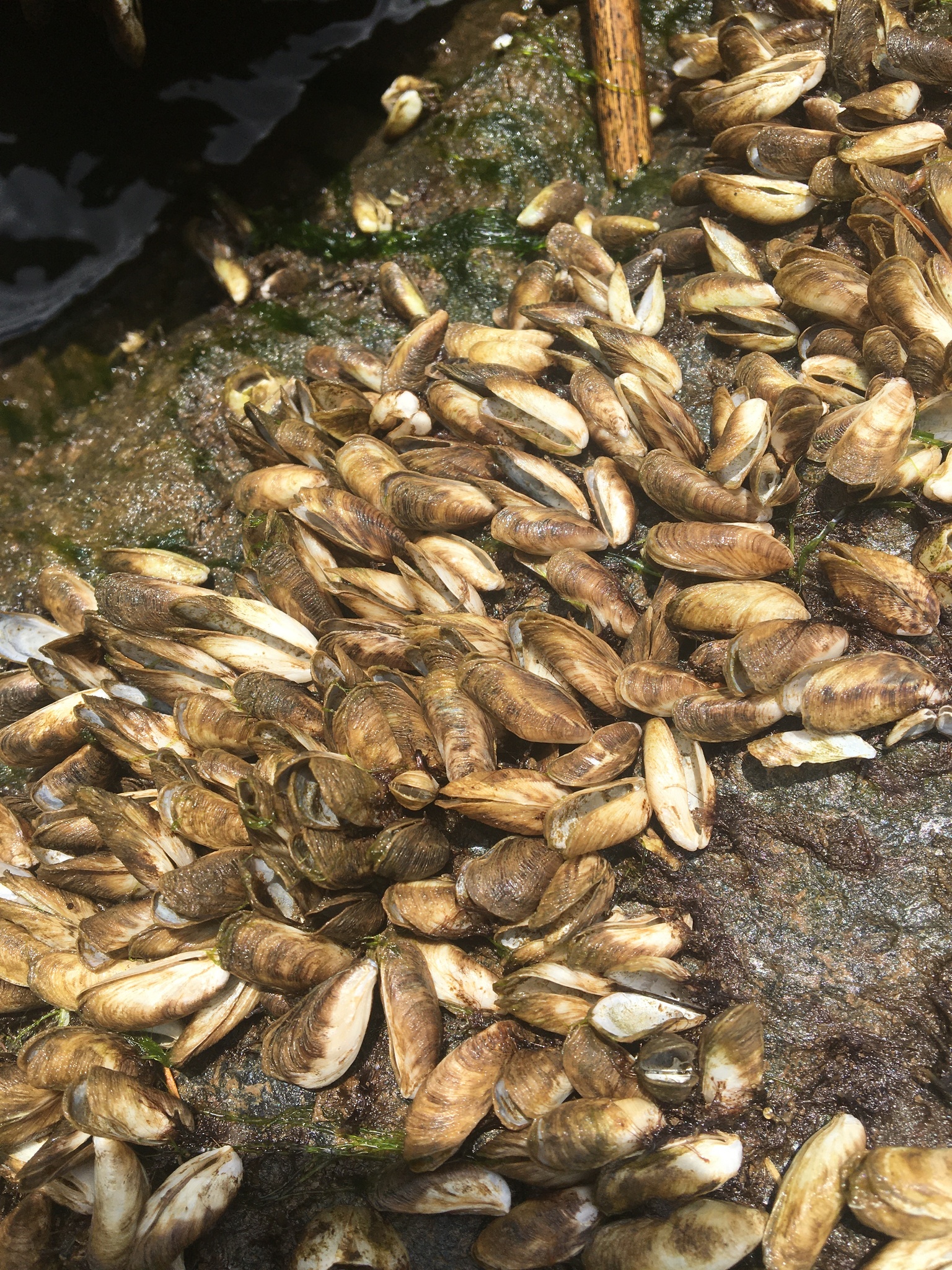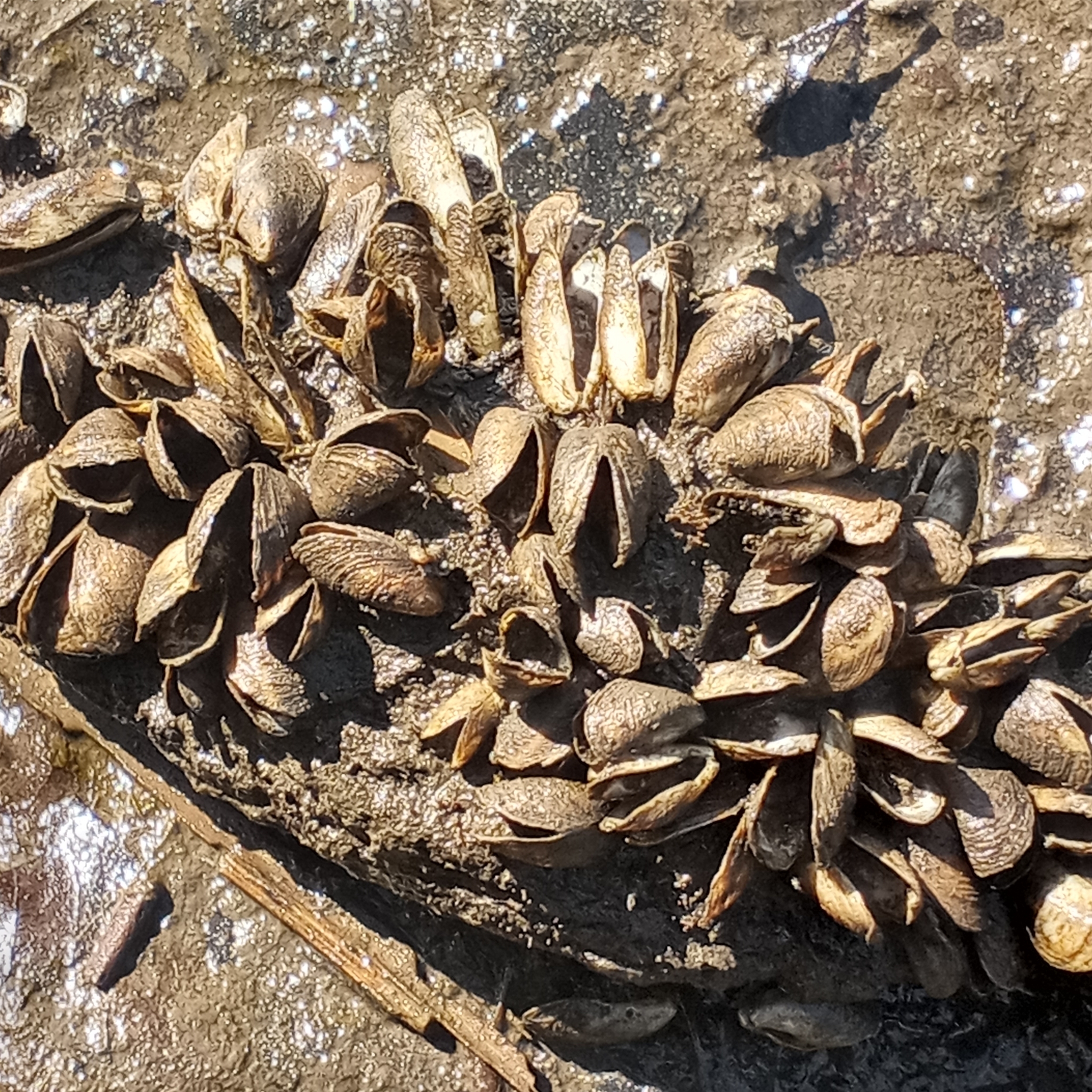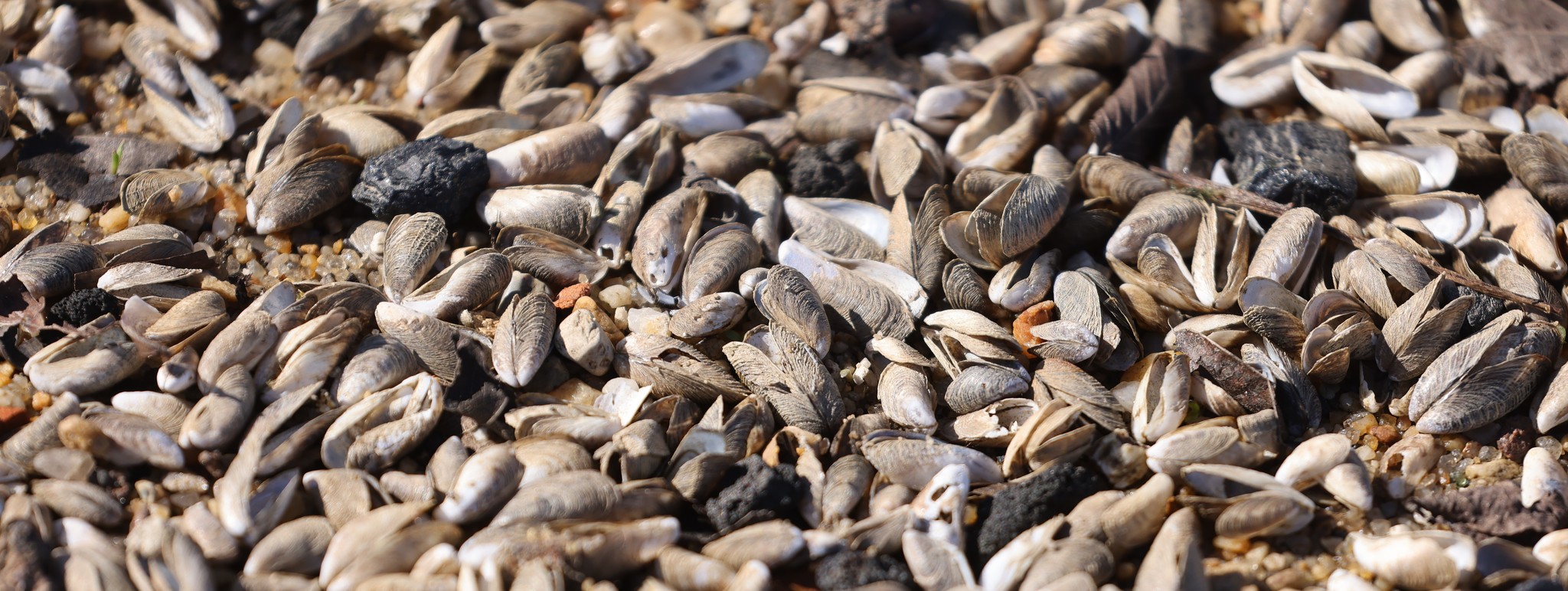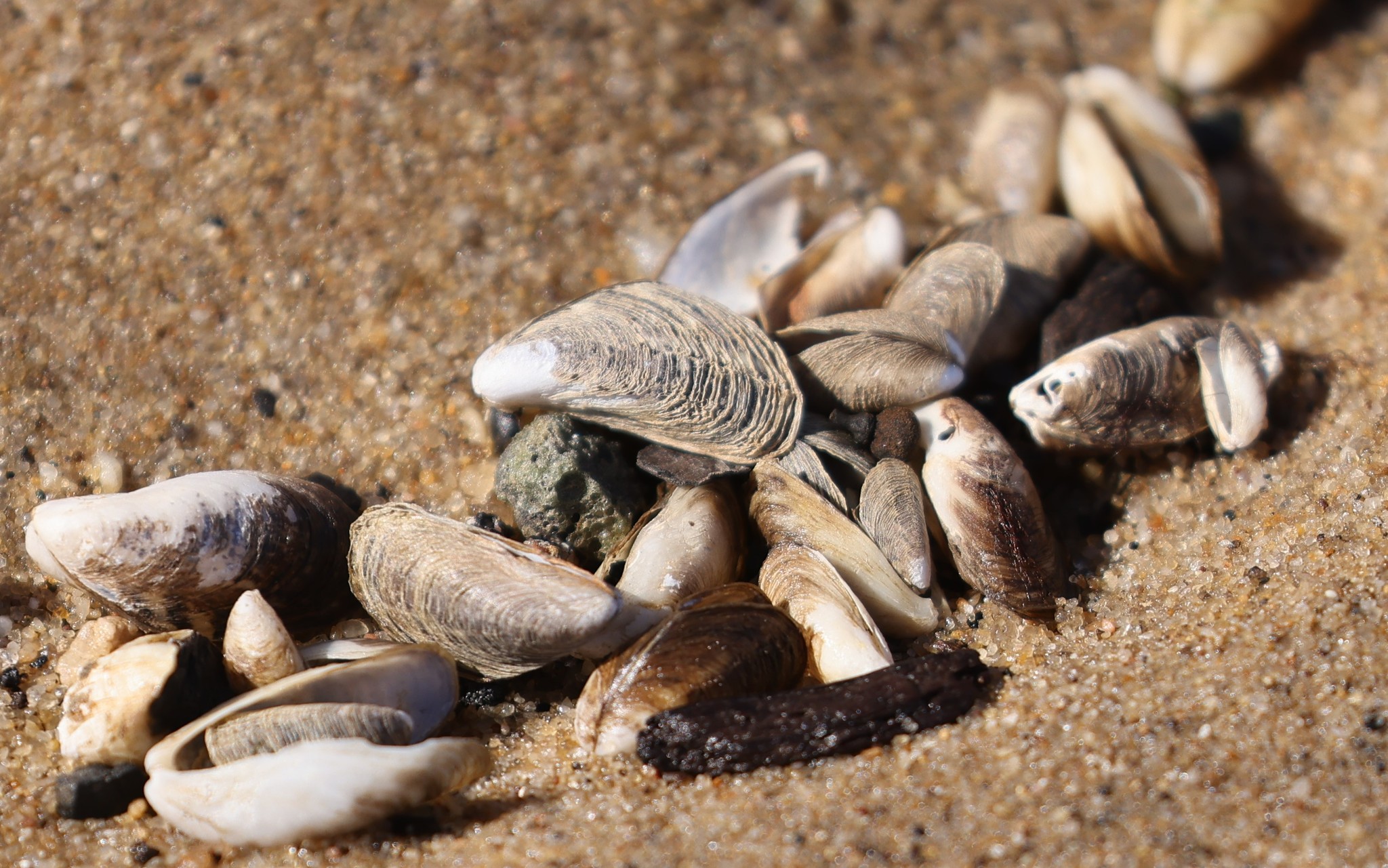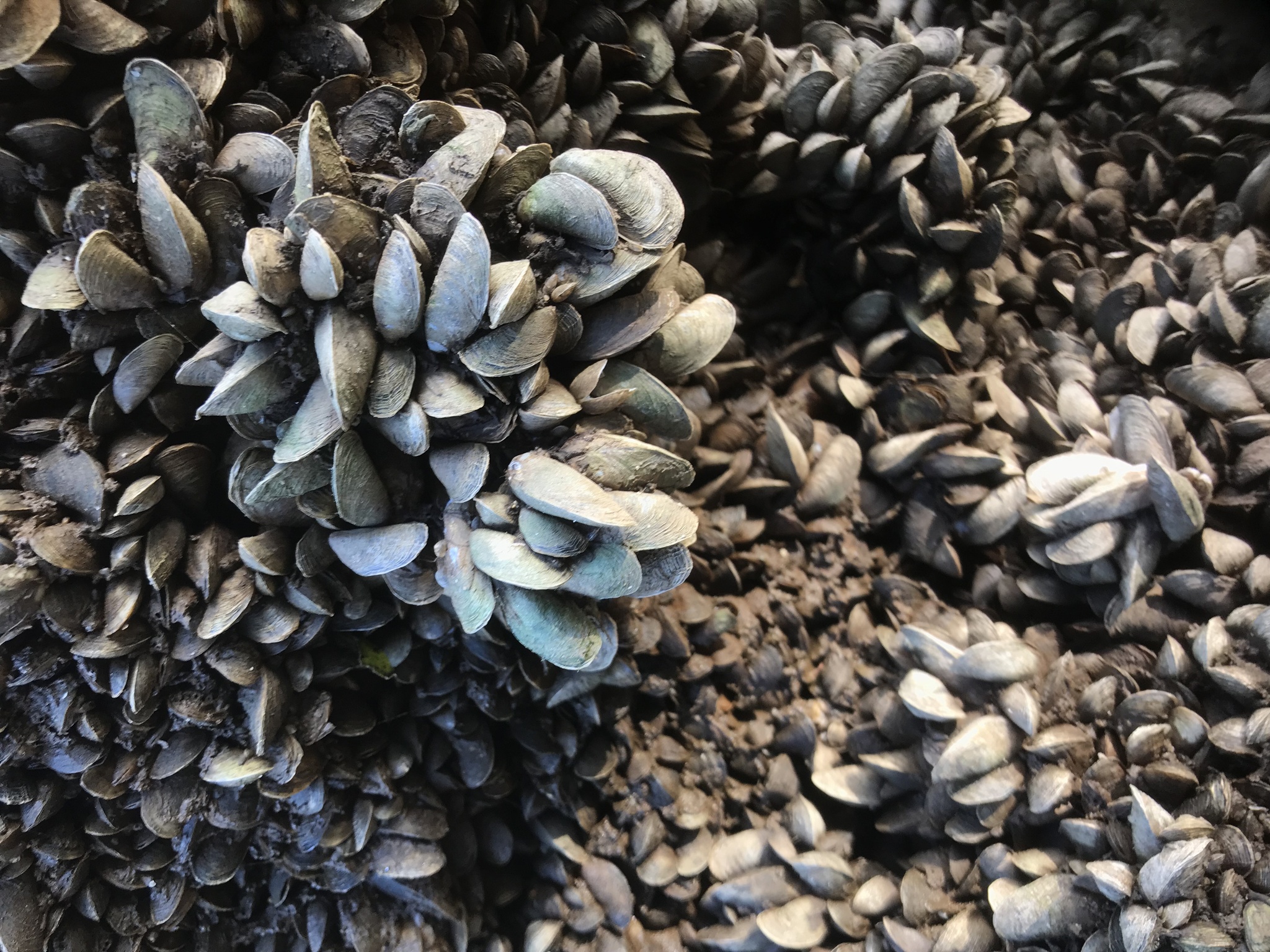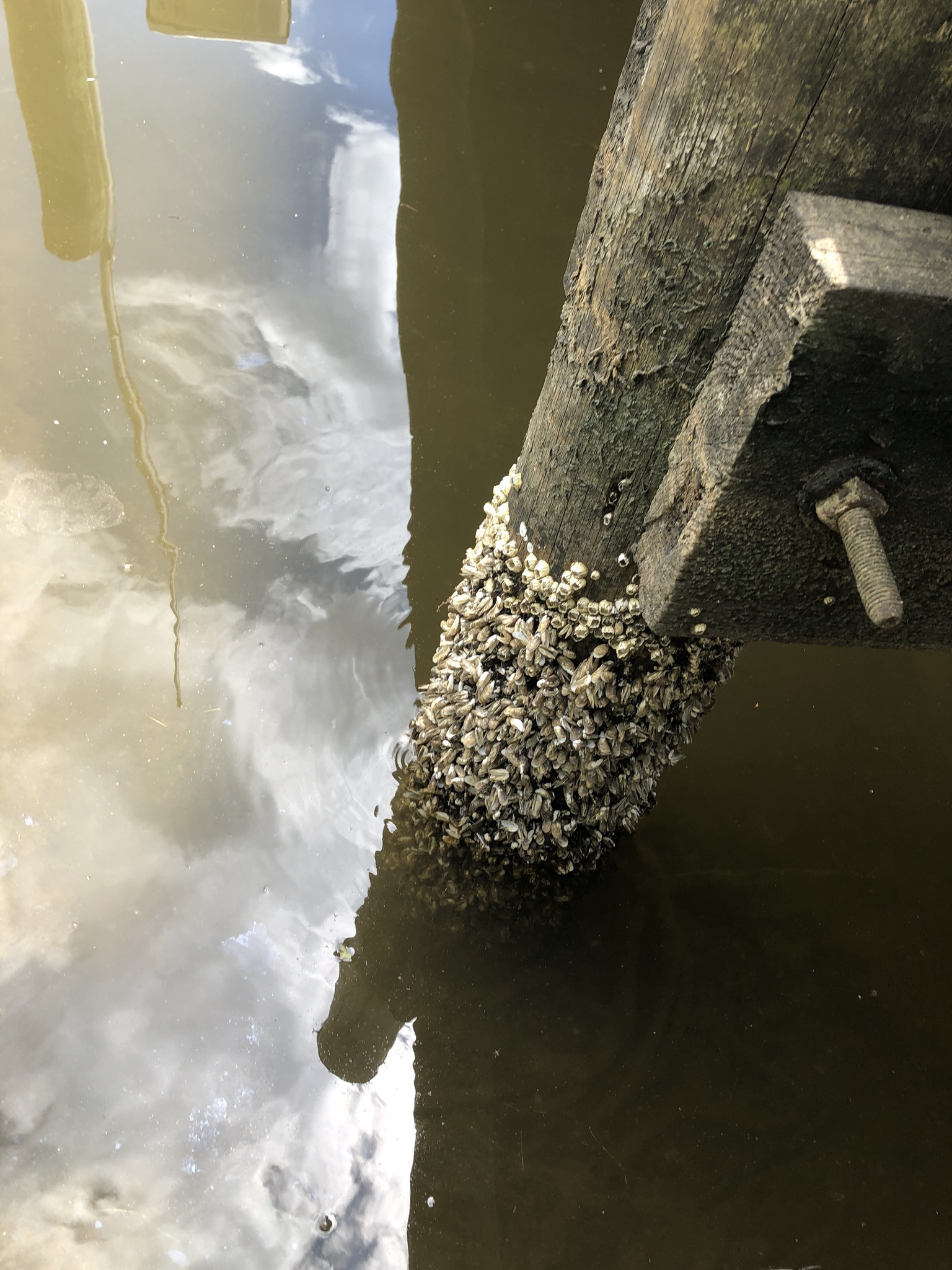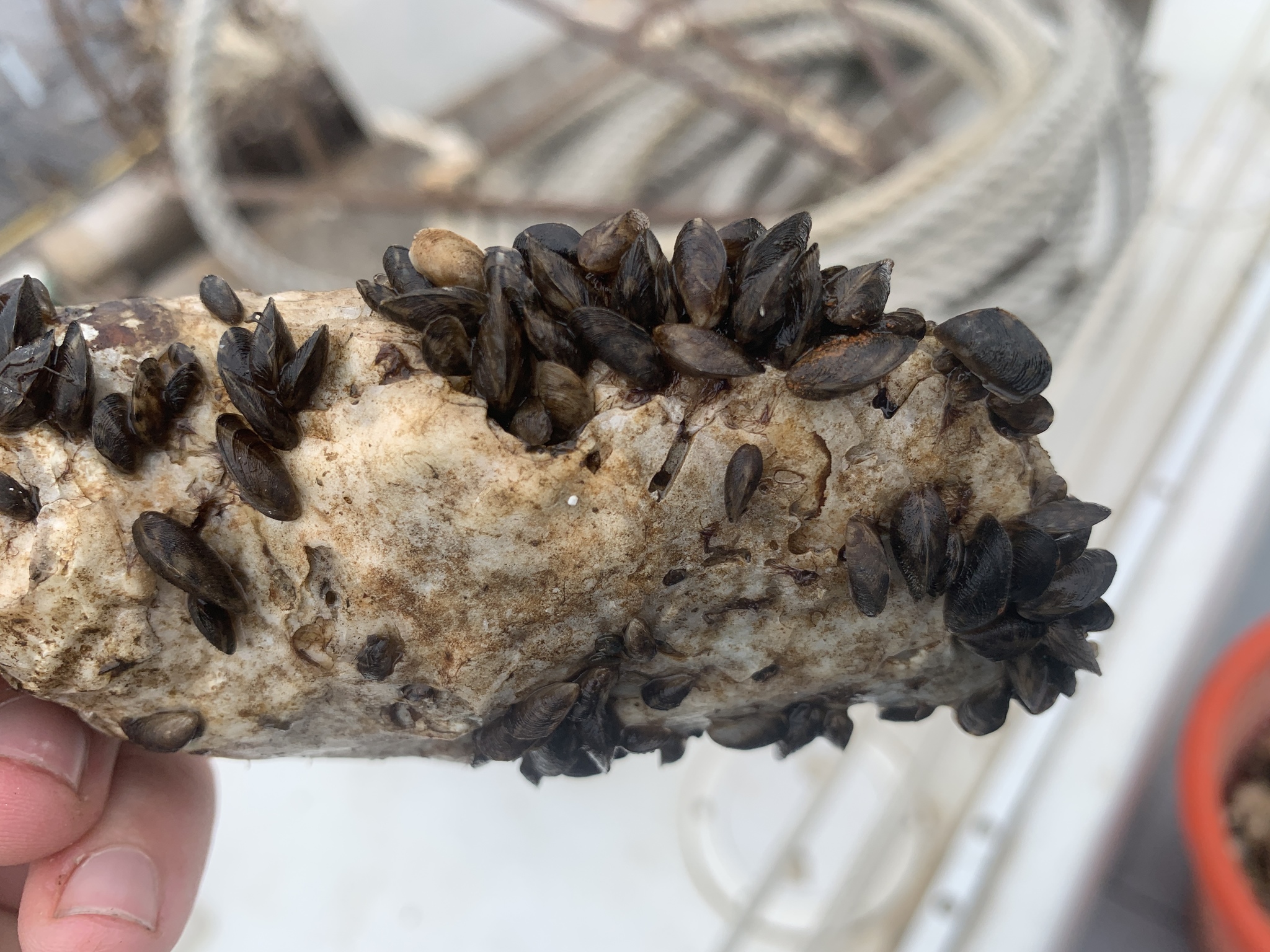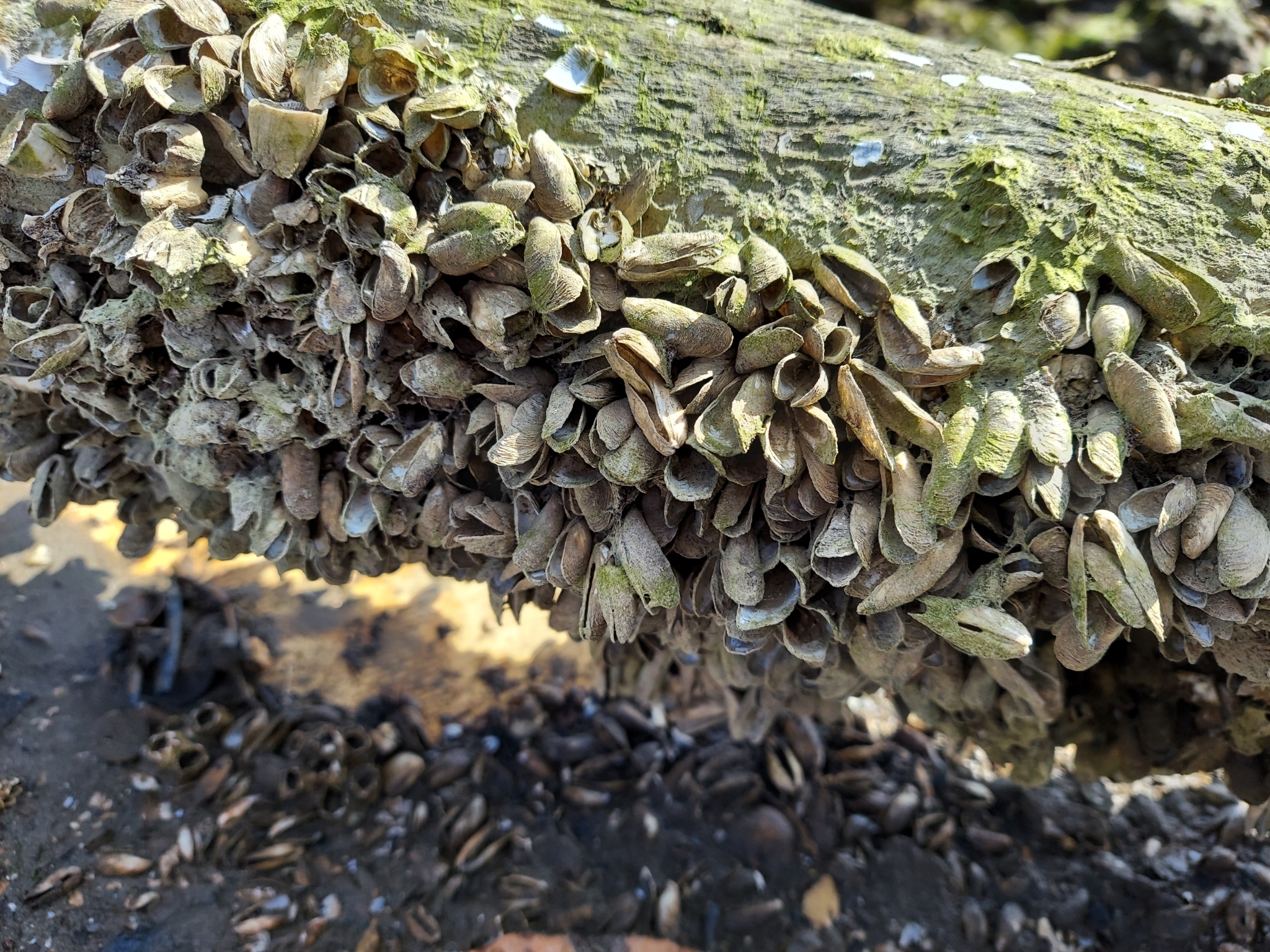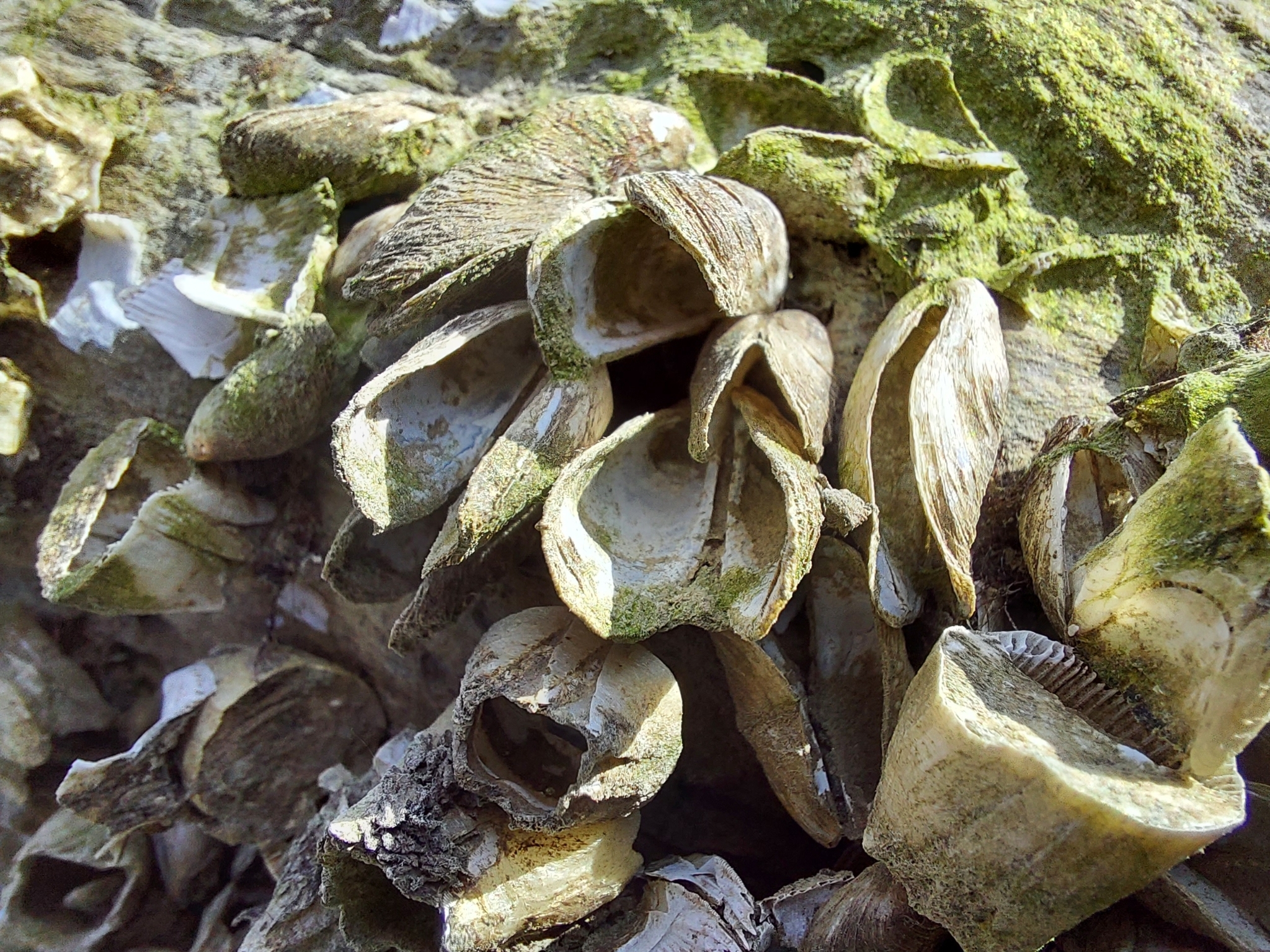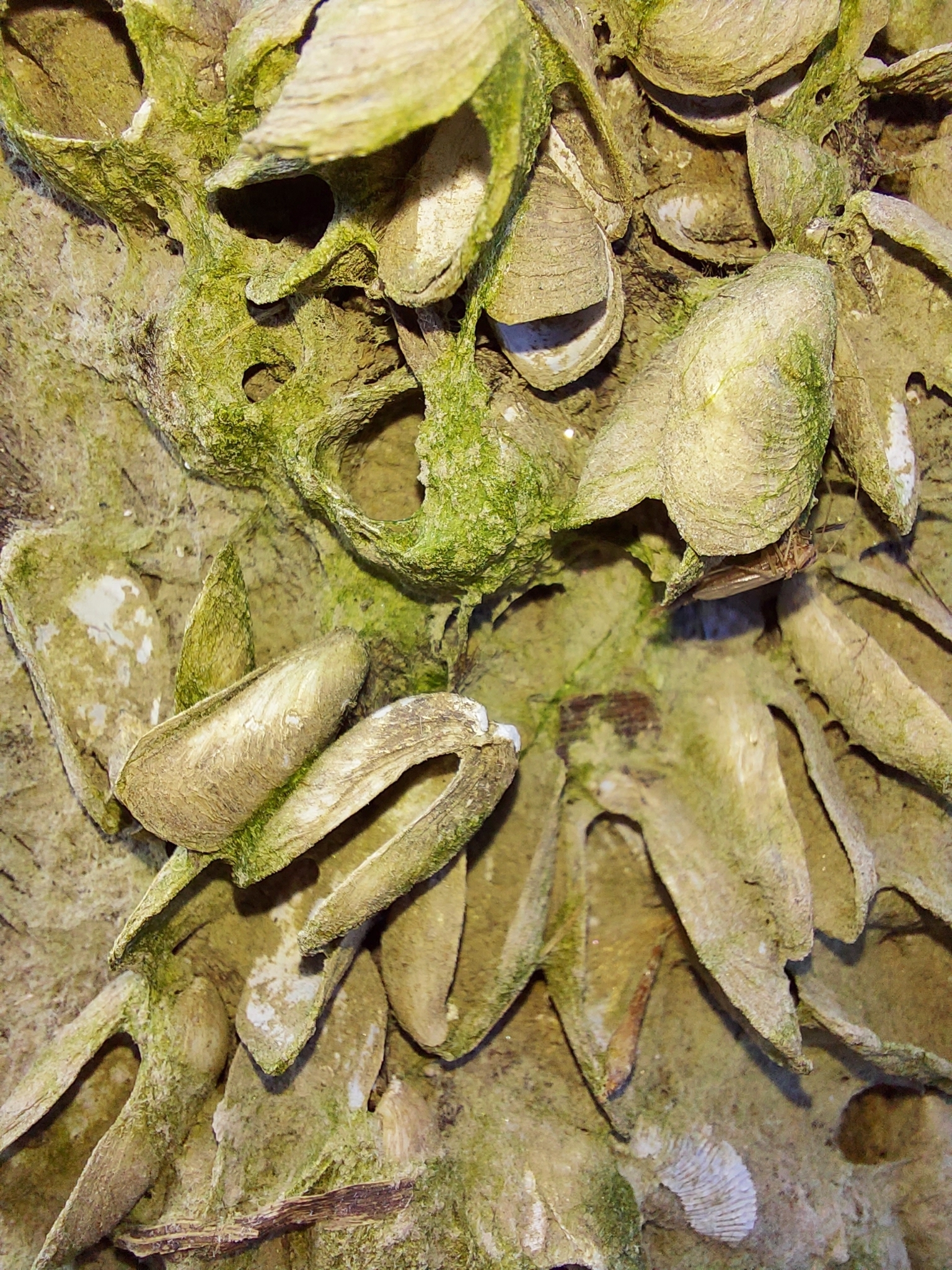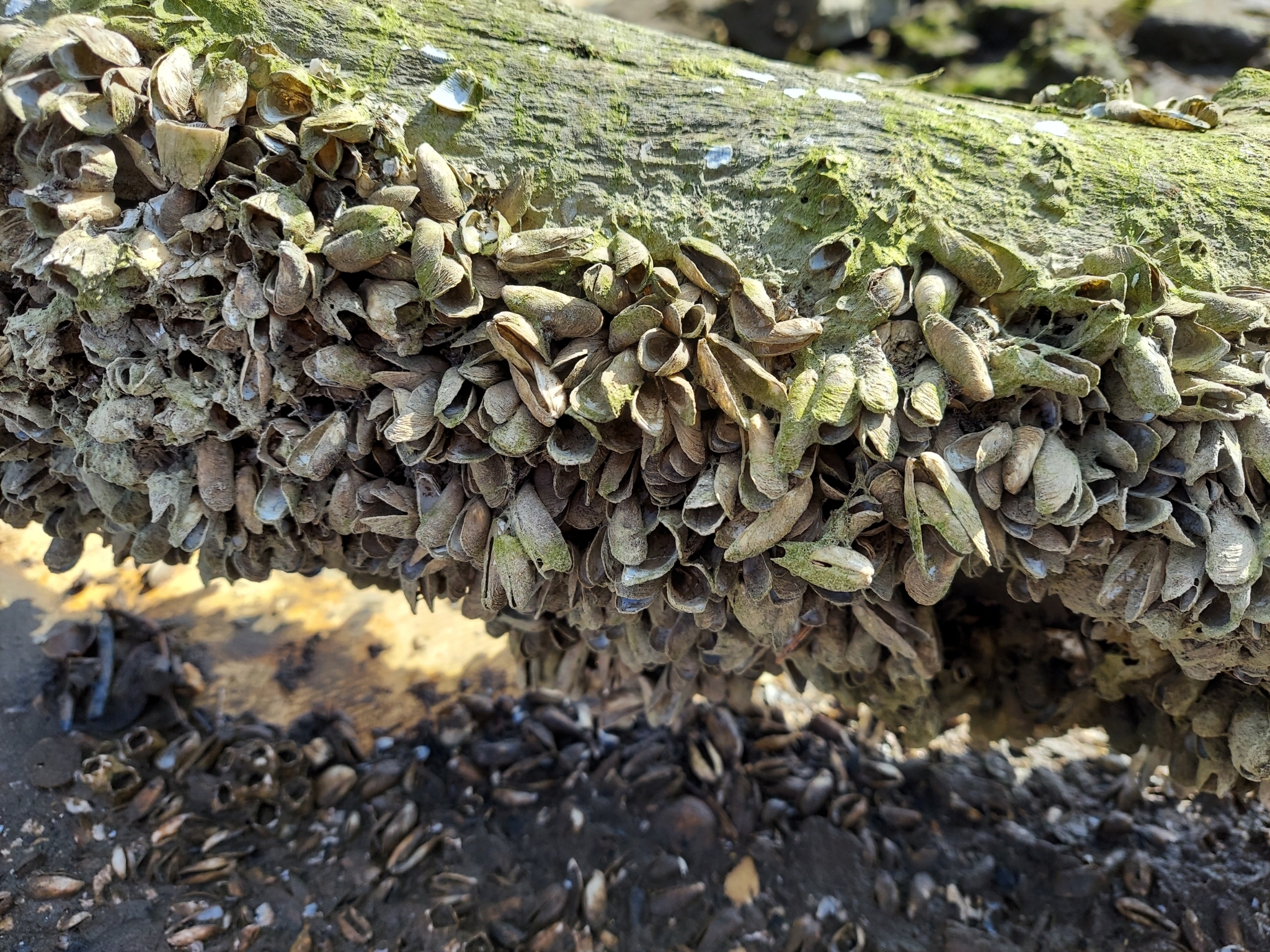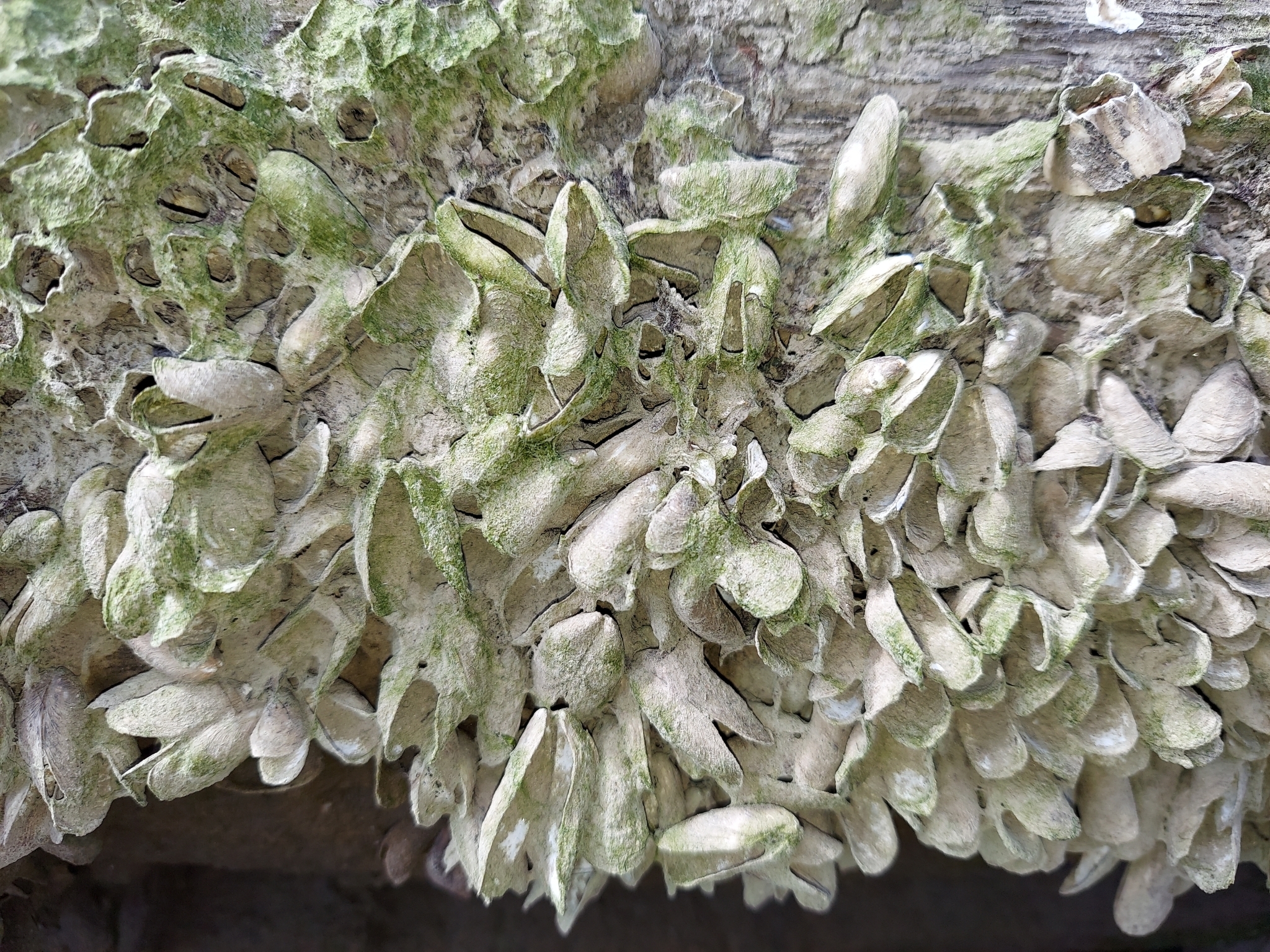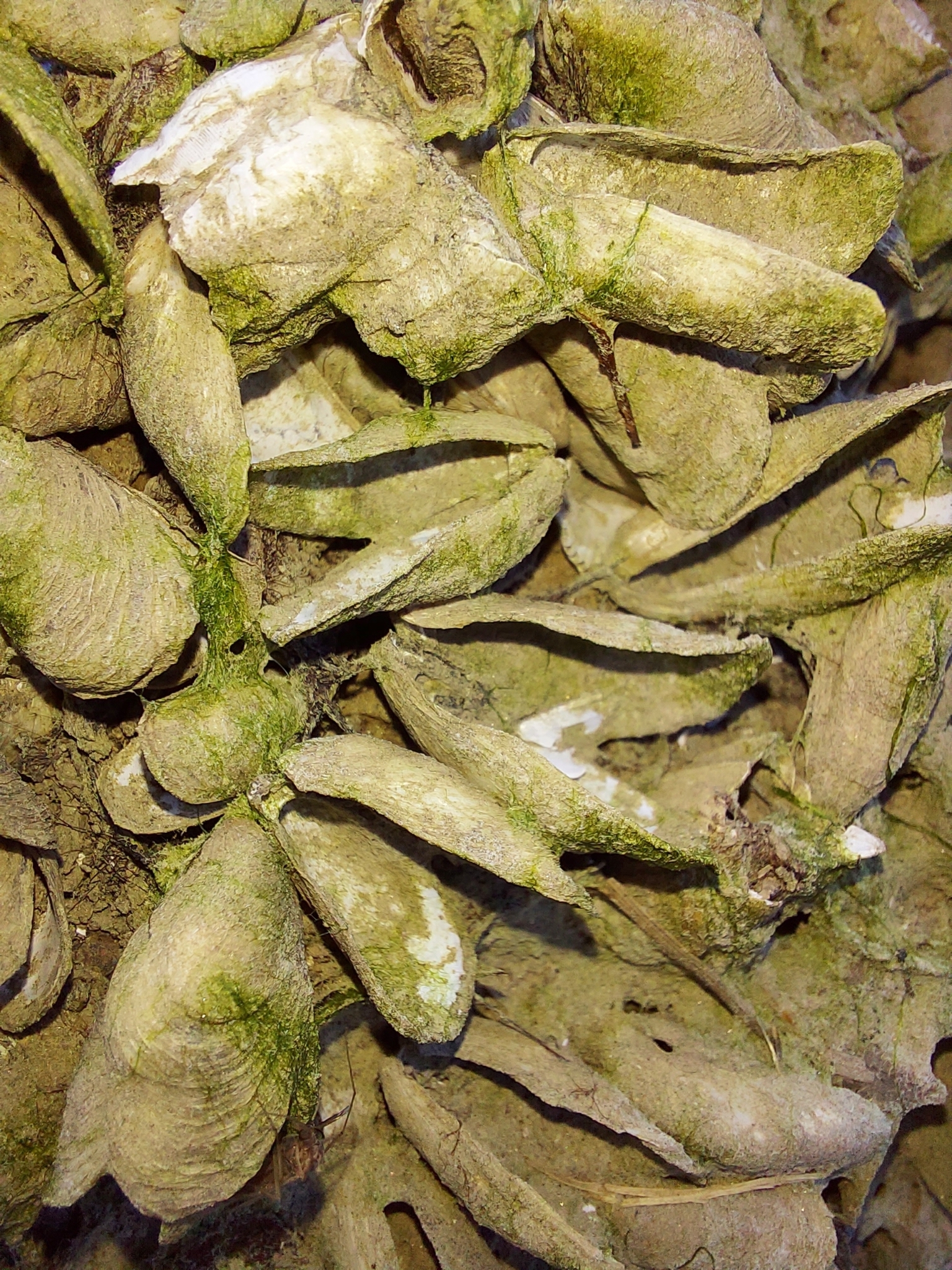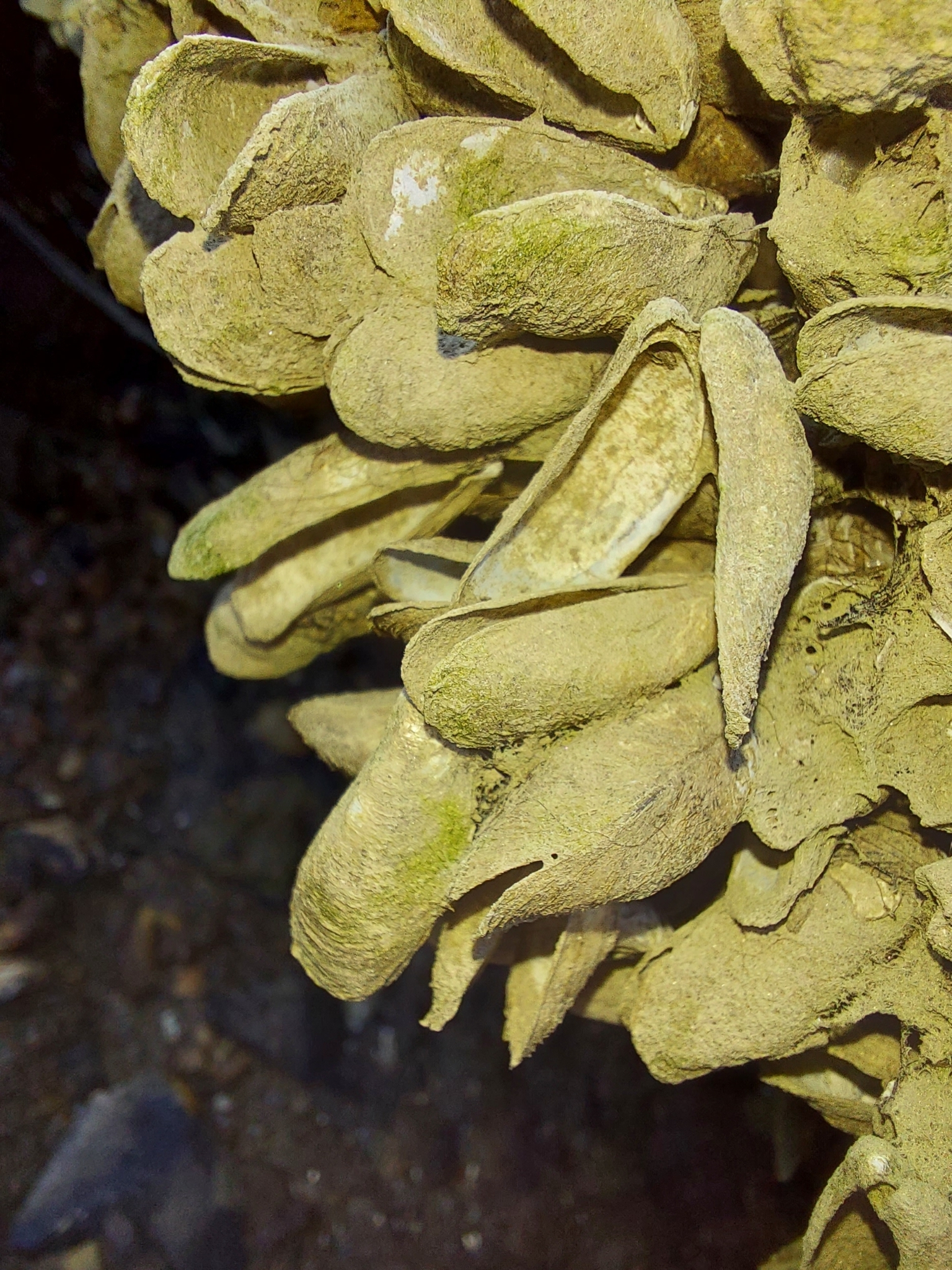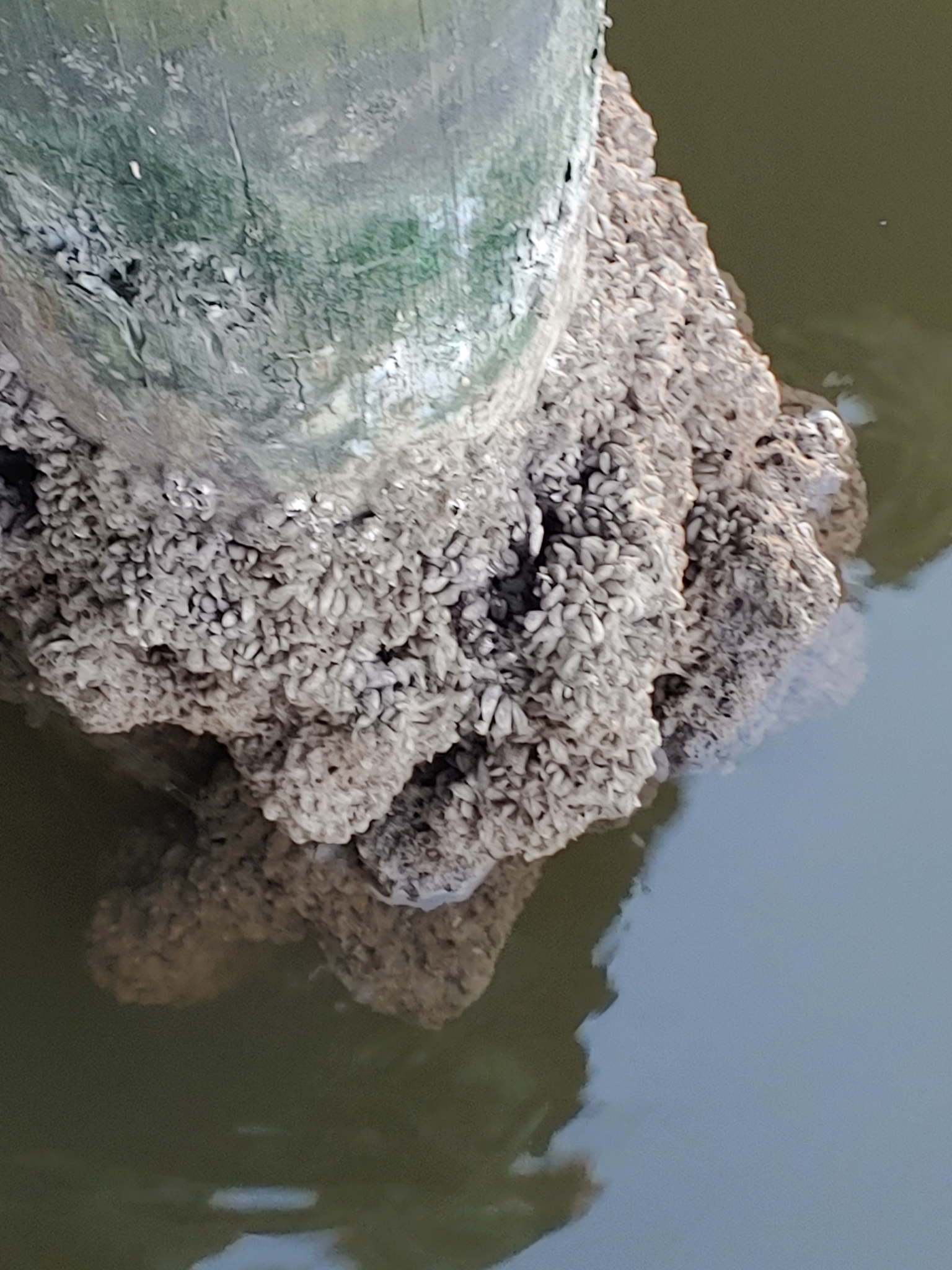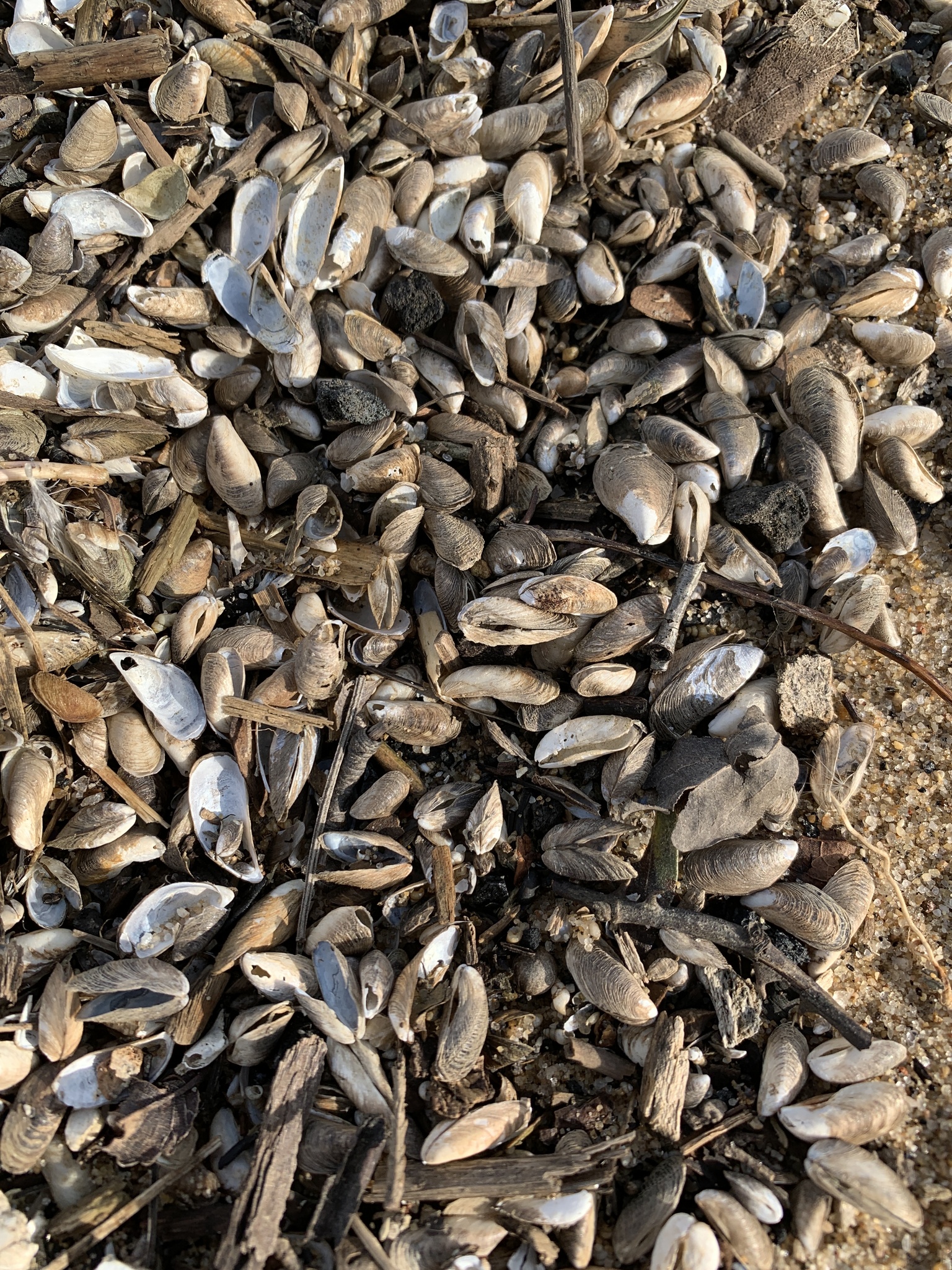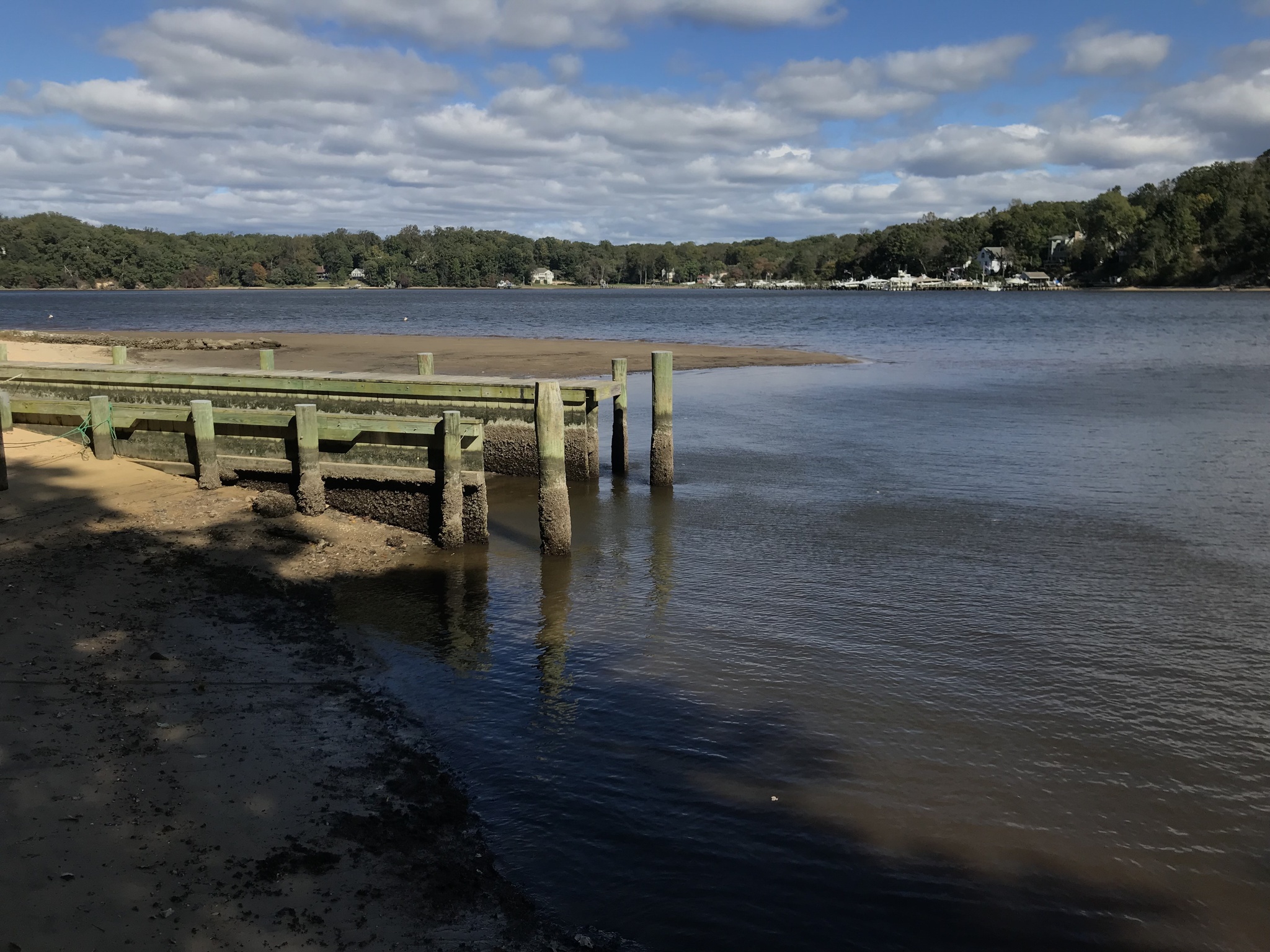Map Snapshot





31 Records
Status
"This species is native in the Gulf of Mexico, and spread from there via ballast water, or attached to oysters that were moved, to the Hudson River in the 1930s, and from there to other estuaries in the eastern US including Chesapeake Bay... Like the zebra mussel, this species is a significant biofouling pest in many countries, especially where it has been introduced in Europe" (Wikipedia, accessed 10/16/2017).
Seasonality Snapshot
Source: Wikipedia
| Mytilopsis leucophaeata | |
|---|---|

| |
| Scientific classification | |
| Domain: | Eukaryota |
| Kingdom: | Animalia |
| Phylum: | Mollusca |
| Class: | Bivalvia |
| Order: | Myida |
| Superfamily: | Dreissenoidea |
| Family: | Dreissenidae |
| Genus: | Mytilopsis |
| Species: | M. leucophaeata
|
| Binomial name | |
| Mytilopsis leucophaeata (Conrad, 1831)
| |
| Synonyms[2] | |
|
Mytilus leucophaeatus Conrad, 1831 | |
Mytilopsis leucophaeata is a species of small bivalve mollusc in the false mussel family, Dreissenidae. It is commonly known as Conrad's false mussel or the dark false mussel.
Identification
[edit]It can look very similar to the zebra mussel, with similar stripes, but it can be distinguished from it by an apophysis or projection on the inside of the shell near the umbo.[3] Shell length ranges between <1 and 2 cm, with an average length of 1 cm.[4]
Distribution
[edit]This species is native in the Gulf of Mexico,[5] and spread from there via ballast water, or attached to oysters that were moved, to the Hudson River in the 1930s,[6][7] and from there to other estuaries in the eastern US including Chesapeake Bay[8] as well as to the Pernambuco coast in northeastern Brazil.[9] This species also spread via ballast water to brackish waters in Europe, including the Baltic Sea, the North Sea, the Atlantic Ocean and the Mediterranean Sea as well as the Black Sea[7][10] and the Caspian Sea.[10]
Like the zebra mussel, this species is a significant biofouling pest in many countries, especially where it has been introduced in Europe.
Habitat
[edit]Mytilopsis leucophaeata is found in brackish water, at salinities ranging from 0.5 psu to about 12 psu, although its upper salinity limit is usually about 5–6 psu. It attaches to hard substrates, including oyster and true mussel shells and cages for them, rocks, boats, and pilings, and also to ropes.[11]
References
[edit]- ^ Cummings, K. (2011). "Mytilopsis leucophaeata". IUCN Red List of Threatened Species. 2011: e.T155623A4809971. doi:10.2305/IUCN.UK.2011-2.RLTS.T155623A4809971.en. Retrieved 8 November 2021.
- ^ Bieler R, Bouchet P, Gofas S, Marshall B, Rosenberg G, La Perna R, Neubauer TA, Sartori AF, Schneider S, Vos C, ter Poorten JJ, Taylor J, Dijkstra H, Finn J, Bank R, Neubert E, Moretzsohn F, Faber M, Houart R, Picton B, Garcia-Alvarez O, eds. (2021). "Mytilopsis leucophaeata (Conrad, 1831)". MolluscaBase. World Register of Marine Species. Retrieved 8 November 2021.
- ^ "Mytilopsis leucophaeata" (PDF). Främmande arter i svenska hav (Alien species in Swedish seas). Informationscentralerna för Bottniska viken, Egentliga Östersjön och Västerhavet.
- ^ "Mytilopsis leucophaeata — the False Dark Mussel". ZMIS information on zebra mussels. Zebra Mussel Research Program, US Army Corps of Engineers. Archived from the original on 2009-01-09. Retrieved 2008-12-21.
- ^ Therriault TW, Docker MF, Orlova MI, Heath DD, MacIsaac HJ (March 2004). "Molecular resolution of the family Dreissenidae (Mollusca: Bivalvia) with emphasis on Ponto-Caspian species, including first report of Mytilopsis leucophaeata in the Black Sea basin". Molecular Phylogenetics and Evolution. 30 (3): 479–489. doi:10.1016/S1055-7903(03)00240-9. PMID 15012933. as PDF
- ^ Walton, W. C. (1996). "Occurrence of zebra mussel (Dreissena polymorpha) in the oligohaline Hudson River, New York". Estuaries. 19 (3): 612–618. doi:10.2307/1352521. JSTOR 1352521. S2CID 83515447.
- ^ a b Kennedy, V. (2010). "The invasive dark falsemussel Mytilopsis leucophaeata (Bivalvia: Dreissenidae): a literature review". Aquatic Ecology. 45 (2): 163–183. doi:10.1007/s10452-010-9344-6. S2CID 23852995.
- ^ Occurrence of this species in Chesapeake Bay and their role in filtration "Oyster Reefs". National Oceanic and Atmospheric Administration's (NOAA) Chesapeake Bay Office.
- ^ De Souza, J.R.B.; Rocha, C.M.C. (2005). "Occurrence of exotic bivalve Mytilopsis leucophaeta (Conrad) (Mollusca, Bivalvia), in Brazil". Revista Brasileira de Zoologia (in Portuguese). 22 (4): 1204–1206. doi:10.1590/S0101-81752005000400057.
- ^ a b Heiler, K. C. M.; Nahavandi, N.; Albrecht, C. (2010). "A new invasion into an ancient lake — The invasion history of the dreissenid mussel Mytilopsis leucophaeata (Conrad, 1831) and its first record in the Caspian Sea". Malacologia. 53: 185–192. doi:10.4002/040.053.0112. S2CID 86519286.
- ^ "Mytilopsis leucophaeata (mollusc)". Global Invasive Species Database. Invasive Species Specialist Group (ISSG).
External links
[edit]- "Mytilopsis leucophaeata (Conrad, 1831) – dark false mussel or Conrad's false mussel". European Network on Invasive Alien Species (NOBANIS).
- Kuijper, W.J. (2000). "De weekdieren van de Nederlandse brakwatergebieden (Mollusca)". Nederlandse Faunistische Mededelingen (in Dutch). 12: 41–120. ISSN 0169-2453.
- USGS Nonindigenous Aquatic Species web page; US range map is incomplete
